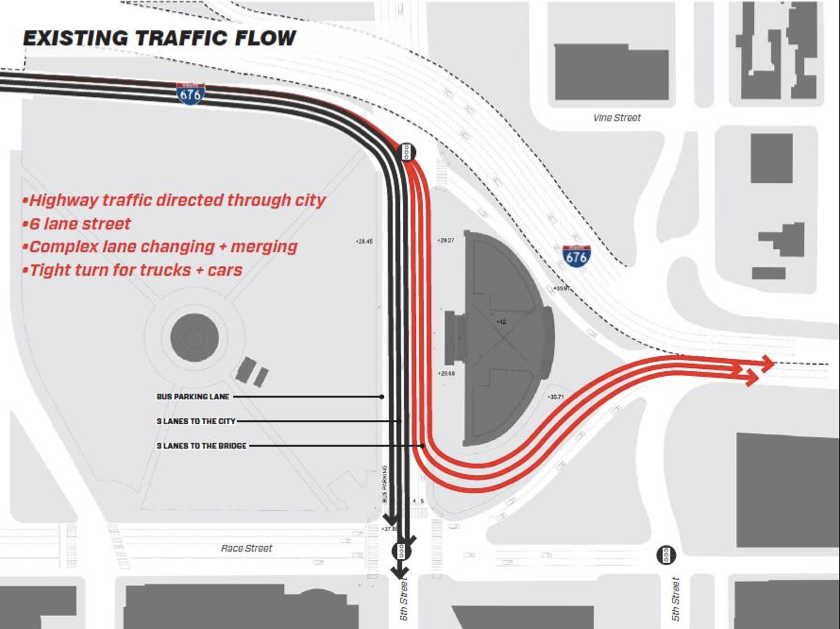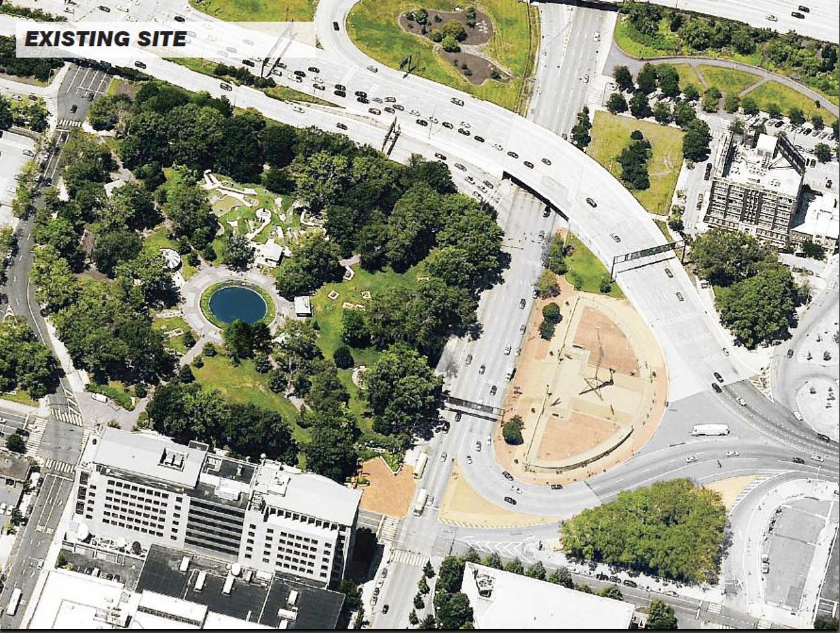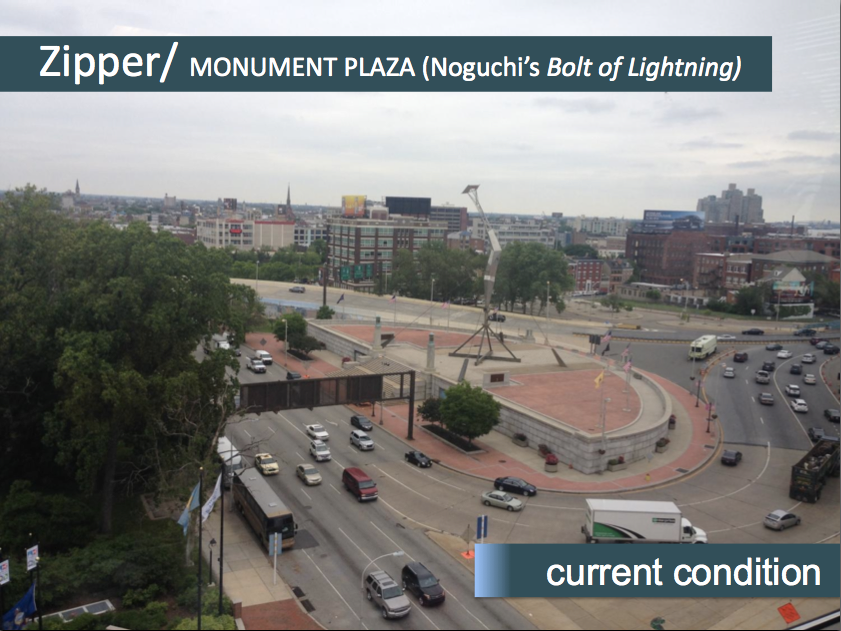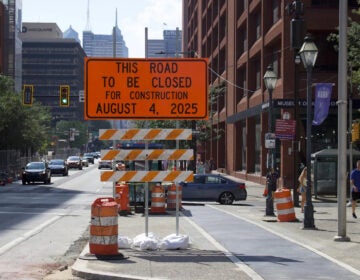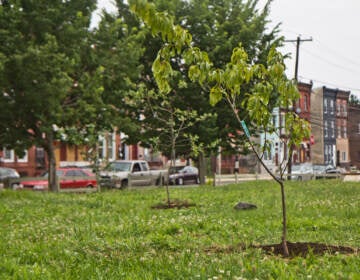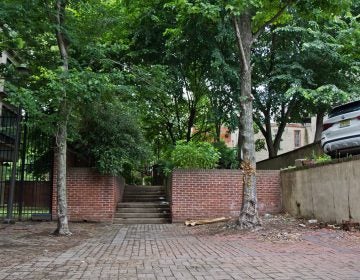PHS has bold plans to redo base of Ben Franklin Bridge
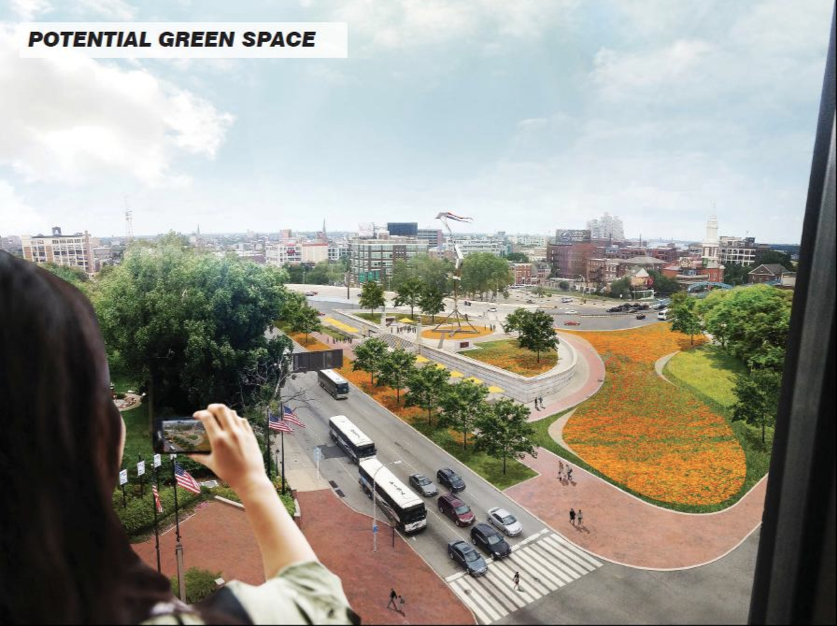
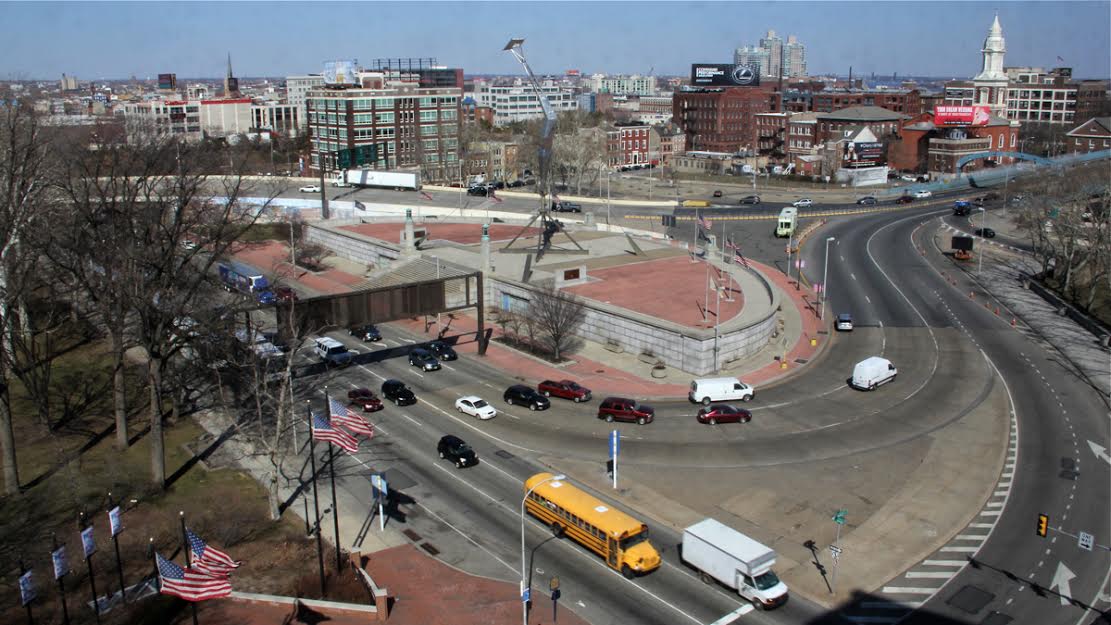
When Isamu Noguchi finally built his A Bolt of Lightning … A Memorial to Benjamin Franklin in 1984, not everyone was a fan. The Inquirer called it a “propped-up monument to a city that, like Rodney Dangerfield, has had – and, with this piece of art, may continue to have – one tough time getting respect.”
Oh, how things have changed. Among the Papal visits, Democratic National Conventions and flattering national press, Philadelphia’s getting so much respect that diehard Negadelphians’ complaints have gone from Dangerfieldian to Guttenbergian – that a city like this doesn’t deserve to be held in any sort of regard, let alone be some sort of star.
Thirty years later, the Pennsylvania Horticultural Society has developed plans to transform not just the plaza surrounding the steel representation of Ben Franklin’s famous experiment, but the entire way we interact with his eponymous bridge and square, too. If PHS can pull it off, the redesign could do more than provide a green and inviting welcome at the bridge’s base: it might demonstrate a fundamental shift in how Philadelphia perceives itself.
FROM GRITTY TO GREENERY
We’re not a city known for post-industrial grit, cheesesteaks and throwing snowballs at Santa anymore. Now we’re a city known for pop-up beer gardens, fine dining, and throwing snowballs at Santa. (Like Prague and defenestrations, Philly will never decouple itself from the snowballs, I’m afraid.)
The planning folks at the PHS can take plenty of credit for the grit-to-garden perception shift. Beyond the rightfully heralded Flower Show and development-inspiring pop-ups, its Civic Landscapes Initiative has worked quietly, almost behind the scenes, to transform Philadelphia’s once neglected areas, ranging from the Azalea Garden at the Philadelphia Museum of Art to Las Parcelas in Kensington.
Now they’re turning to the less-than-beloved concrete pedestal officially named Monument Plaza.
The proposal is as simple as it is audacious: squeeze two lanes where an access strip sits now, between the plaza and the westbound lanes coming off of the bridge, to feed traffic towards New Jersey, and then remove the three lanes on 6th Street that wrap around the plaza today. The redesign would provide direct traffic flow to the bridge, a straight approach for trucks and allow 6th Street to go from six lanes to four – one of the lanes would still provide indirect access to the bridge, via Race and 5th Streets. With fewer lanes on 6th, signalized pedestrian crossings could be installed, and the three-lane onramp that currently loops around the plaza could be replaced with greenery.
“Our hope is to make it a more welcoming area and more connected to the fabric of the city,” said Tammy Lehigh DeMent, Associate Director of Landscape Initiatives at PHS. OLIN, which also helped redesign Dilworth Park, prepared the conceptual designs.
The project is part of the Civic Landscapes Initiative’s Vine Street project, dubbed the “Zipper”. PHS hopes to use landscaping along Vine Street to better connect the Delaware River’s waterfront with the Schuylkill. With streetscape improvements already on the way for the area between 18th and 22nd Streets, PHS only has from 18th Street down to the Ben Franklin to bridge. Logan Square provides one anchor, and the idea was originally to just beautify Monument Plaza to create another.
But, “we know if we make [the plaza] beautiful, people will want to go there,” said DeMent, and making the plaza accessible on foot requires redirecting some of the traffic.
The Delaware River Port Authority, which is responsible for Monument Plaza and the Ben Franklin Bridge, has been “very supportive” so far, said DeMent. But… “Their focus is pedestrian safety and not stopping traffic from filtering on and off the bridge.”
DeMent made it abundantly clear that PHS agreed with DRPA on the importance of pedestrian safety and maintaining traffic flows. “Our entire plan is contingent on whether or not that is feasible,” said DeMent. In this context, “feasible” would mean that it doesn’t significantly disrupt traffic getting on or off the bridge. PHS is funding a traffic study, which should be ready by mid-summer.
If the feasibility study shows minimal impact on traffic, then the next step will be seeking DRPA’s support for initial design work. That design study would also provide estimates for the proposal’s cost.
If all goes as hoped, DeMent envisions a newly enlivened Monument Plaza with enticing green space and new lighting for Bolt of Lightning.

The same Inquirer editorial that grumbled about Philadelphia’s lack of respect said Noguchi’s sculpture “shrinks in its plaza before the bridge, inaccessible to pedestrians and, for motorists, a sliver out-dazzled by a parade of billboards announcing the sizzle of Atlantic City.” It went on to call it “a crumpled, bent-can of a sculpture, in the end, a symbol more of the dispirited swatch of Vine Street it concludes”.
If PHS’s proposal becomes reality, the shrinking presence and pedestrian inaccessibility will quickly disappear, not unlike Atlantic City’s sizzle over the last few years. From a dispiriting symbol of steady decline, Monument Plaza would be reincarnated as a metaphor for Philadelphia’s recent renaissance.
And even if it proves infeasible, the proposal alone speaks to a fundamental shift in Philadelphia’s psyche over the last thirty years. Philly has gone from the downtrodden place that can’t get no respect, to a city flirting the idea that respect is something it can simply continue to command.
WHYY is your source for fact-based, in-depth journalism and information. As a nonprofit organization, we rely on financial support from readers like you. Please give today.




